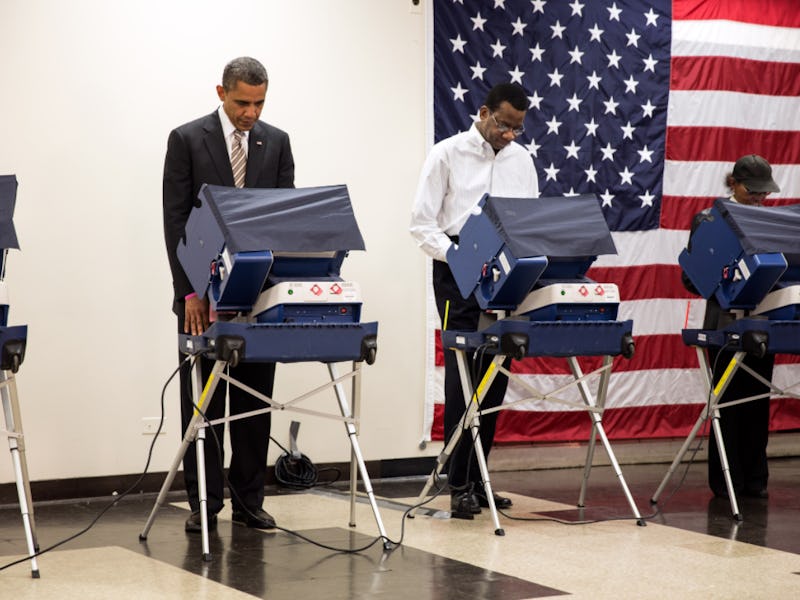Voting may be a fundamental right in the United States, but it is not fundamentally easy to actually vote. Tuesday is the final chance for Americans to vote, meaning that if you didn’t vote early or by absentee you have to stride up to your assigned polling location and either fill out a paper or electronic ballot. But even if you do go through all that effort, it’s possible that, because of poor ballot design, your vote may not even count.
“The most surprising thing we continue to find is that even highly motivated people who take the time to register to vote, find their polling place, and then make the effort to actually vote on election day, can be led into making errors in their votes so severe that their votes don’t reflect their intent,” Rice University psychology researcher Phillip Kortum, Ph.D. wrote in an release.
Korum and his colleague Michael Byrne, Ph.D., are publishing an article on poor ballot design in the December issue of Current Directions in Psychological Science. In the release, he notes that voter fraud and security surrounding polling stations tend to be the biggest concerns about the voting process, but what we really should be concerned about is poor interfaces and user error. Good, helpful products are based in behavioral psychology, he points out; for a vote to be successfully designed, a ballot needs to be as thoughtfully composed as an Apple product.
Researchers know what works and what doesn’t. Florida’s butterfly ballot in 2000 illustrated the theory that a double-column ballot is much more confusing that a single-column ballot. The way that candidates names are presented also makes a difference. When the names of candidates running for the same position in office are printed within the same column, voters understand that they are considering them all for the same task. If candidates are listed in multiple columns, like they are in New York, researchers have found that voters become confused as to whether or not these columns refer to a different voting task. This makes sense when you consider the law of proximity: It’s typical human behavior to interpret items placed closely together as related.
The order of the candidates on the ballot also matters. A psychological phenomenon called the primary effect explains that we best remember the things we read first. Researchers have found that on ballots that randomize the order of candidates, the candidate who is listed last does the worst. Stanford University professor Jon Krosnick has made the case that in 2008, Hillary Clinton beat Barack Obama in New Hampshire because her name was listed first on the ballot, even though Obama had been predicted to win the state.
How you judge the design of a ballot comes down to what is intuitive and what is not. Drawing an arrow toward the candidate you want isn’t intuitive, but coloring in an oval is. Cultural norms have taught us to correct a mistake when we make it, but if you do that on your ballot (like crossing out your oval), it makes your vote invalid. The problem is that designers have to figure out what is most intuitive for an extremely diverse population for an activity people do so infrequently. On top of that, ballot instructions are mandated by state legislatures and written by local election officials, meaning that ballot design becomes a state-by-state problem.
The answer, says Korum, isn’t necessarily to make all voting electronic because the machines deployed over the past decade also don’t incorporate the psychology of design or take human error into account. To truly make the system better, it has to be overhauled and redesigned with consideration to decades of research on human behavior.
“We are working with election officials in Texas and California as part of a team that includes computer scientists and other voting experts to build voting systems that not only have excellent security properties but allow the voter to quickly, easily, and accurately caste their vote as they intend,” says Korum. “[Even] if it’s the first they they have voted.”
